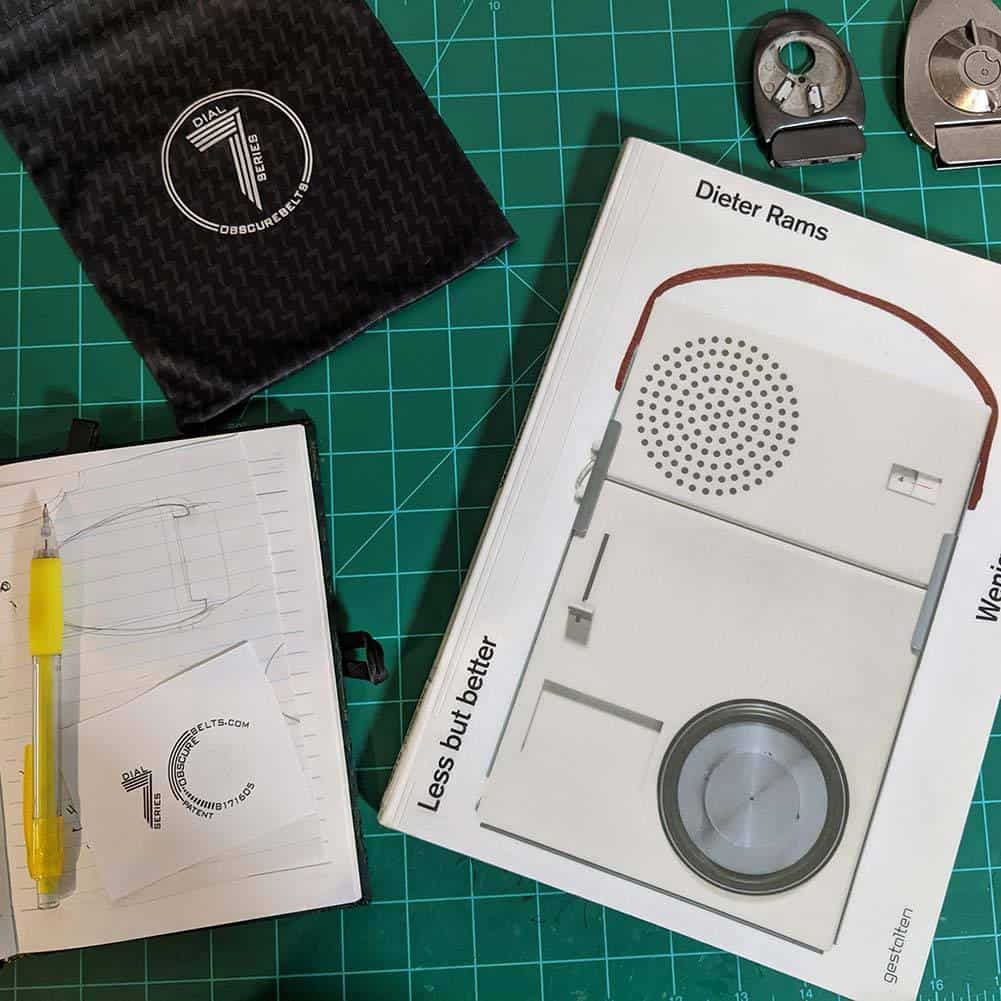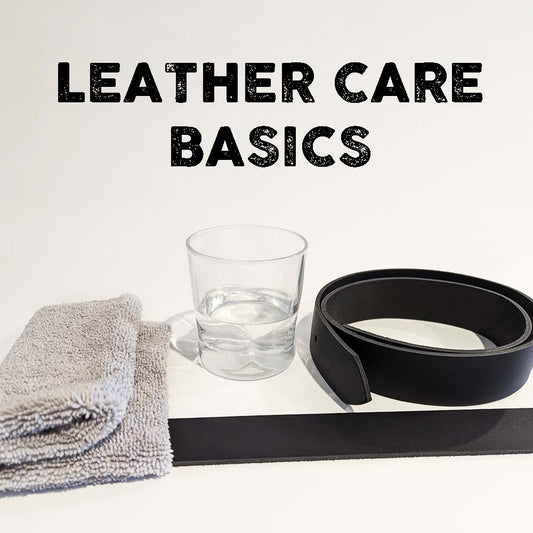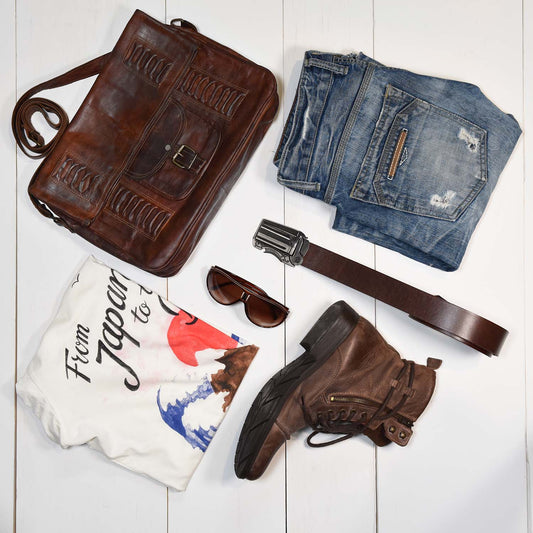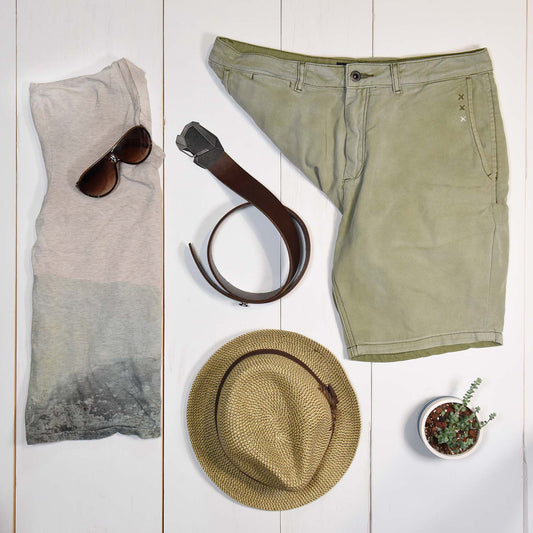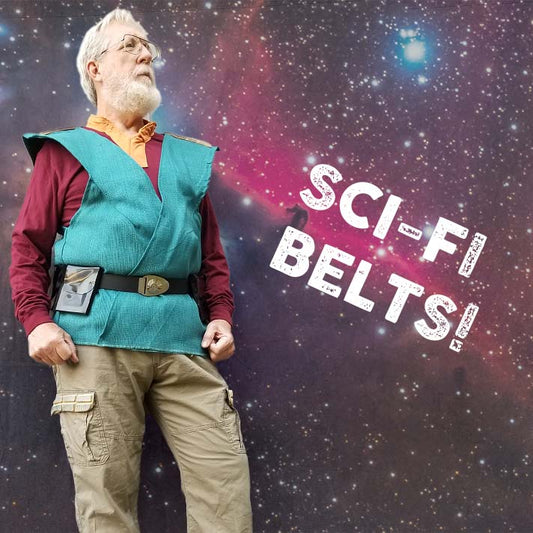What is good design? Bryan and I ask ourselves this question about our belts every day. Is it the simplest buckle, or the one that makes you the happiest to use? Is it one that holds your pants up the best, or the one that sparks conversations with strangers?
No one is more qualified to say what good design is than Dieter Rams, one of the most prolific industrial designers of our time. He is best known for his 10 Principles of Good Design and belief that good design is less but better. This thinking massively influences how we think about everyday objects. Here are a few thoughts about how his principles of good design can be applied to our custom belts.
GOOD DESIGN IS INNOVATIVE
Bryan started creating belts because it seemed to him that belt technology had not changed in a couple of centuries. Just because an object or technology functions does not mean it is the best version it could be. Yes, old belt technology is functional, but is it that enough? Does it take advantage of new techniques and technologies? Is there room to innovate toward a better design? We would argue that yes, there is plenty of room for better, more innovative belts.
GOOD DESIGN MAKES A PRODUCT USEFUL
The reason a belt exists is to hold up your pants. In that sense, all belts are good designs, but what makes ours better is that their value is more than just their utility. They can hold up your pants AND keep your leather looking new AND look cool at the same time. We want our belts to be so much more than just useful.
GOOD DESIGN IS AESTHETIC
Aesthetics rank high on our priority list when choosing objects we use every day. We wouldn't wear anything that isn't aesthetically pleasing to us, so why would we ask anyone else to? As a formally trained sculptor and belt engineer, Bryan puts a lot of thought and care into creating objects that feel good to touch, not just look good. A belt is something you touch so many times a day that using it should feel natural, like a frictionless extension of your body. A good belt could not do this if it was not visually and physically aesthetic.
GOOD DESIGN MAKES A PRODUCT UNDERSTANDABLE
I think Dieter Rams would agree that a well-designed object is one you can understand without explanation. The curves and plane shifts in our buckles tell your hands how to open it better than your eyes or my words can. It is so satisfying to watch kids come up to our table at events and instantly understand what our belts are about. Their inquisitive minds and hands find the design cues in the buckle to easily open it. They get it, without any instruction. Adults usually take an extra couple of seconds, maybe because they have a more ingrained idea of how a belt should work. After a couple of tries, the simple open-close action starts to make sense and the wonder of playing with a completely different kind of belt sets in.
GOOD DESIGN IS UNOBTRUSIVE
Here is where we deviate from Dieter Rams. We have always asserted that our buckles are small works of art - functional, wearable art. They come out of a creative process that merges design, engineering, and sculpture. It would be a stretch to say that any of our most successful buckles are unobtrusive. They are statement pieces that the wearer can use to express their style and start a conversation. Good design doesn't need to be boring or unobtrusive to be successful.
GOOD DESIGN IS HONEST
We can talk all day long (and have) about creating better, more innovative designs that are wearable works of art. If we're honest with ourselves for a moment: we make belts for a living. Our belts won't change the world - they hold up your pants. Our buckles aren’t perfect - they are progressive and try to push the boundaries of what a belt can be. We are honest with ourselves and our patrons about this fact. Each new design is an experiment into how far we can take our belt technology while staying true to function and aesthetics. Every one is not a success, but we build on what we learn to keep making better buckles.
GOOD DESIGN IS LONG LASTING
I think we can all agree that fast fashion is the antithesis of good, environmentally conscious design. What we aim to create are products that last many years. I love it when customers come up sporting one of our belts they bought years ago that still looks good and functions well. It is a joy to see our belts bear up to daily use, physically and aesthetically.
The risk we take when innovating is creating something new and untested, but also imperfect. That is the reason we continue to improve our buckles while standing behind previous versions. We offer repairs on older designs if they have a mechanical issue, as well as replacement leather straps to extend the life of our belts as long as possible.
GOOD DESIGN IS THOROUGH DOWN TO THE LAST DETAIL
We always take this principle to heart, and sometimes to the detriment of our self-imposed deadlines. There have been times when we let the process of perfecting every last detail get in the way of being more prolific creators. It is more important to us to carefully perfect the tiniest details than pump out new designs on the kind of timeline that some of our fans might prefer. Our meticulous attention to detail is what makes our buckles so unique and worth the wait.
GOOD DESIGN IS ENVIRONMENTALLY FRIENDLY
This principle of good design goes hand in hand with designing to last a long time. Treading lightly on the planet should be a goal of any product, and for us, a big part of that is creating well-made, well-design belts and buckles that will last many years. Unlike many fashion companies, we do not design for planned obsolescence. It would be a waste of the incredible amount of time, energy, and resources we invest in each buckle.
The core feature of our patented design is the sizing stud the buckle latches onto. It protects the leather strap from stretching and distortion so that it looks better and lasts longer. We use locally sourced, high-quality vegetable tanned leather in a thick weight that does not split or crack over time. Our attention to detail and commitment to using high-quality materials means a better product that you can use for many years instead of months.
GOOD DESIGN IS AS LITTLE DESIGN AS POSSIBLE
If we agreed with this principle, we would sell shoe strings to keep your pants up - simple and effective, yet entirely boring. The intense process of designing a new buckle is part of its appeal. Every new buckle design starts as dozens of ideas, then slowly we subtract, subtract, subtract until the essence of what we want to create emerges. The first idea is never the best one, so we would be cheating ourselves and fellow belt-wearers if we stopped there.

